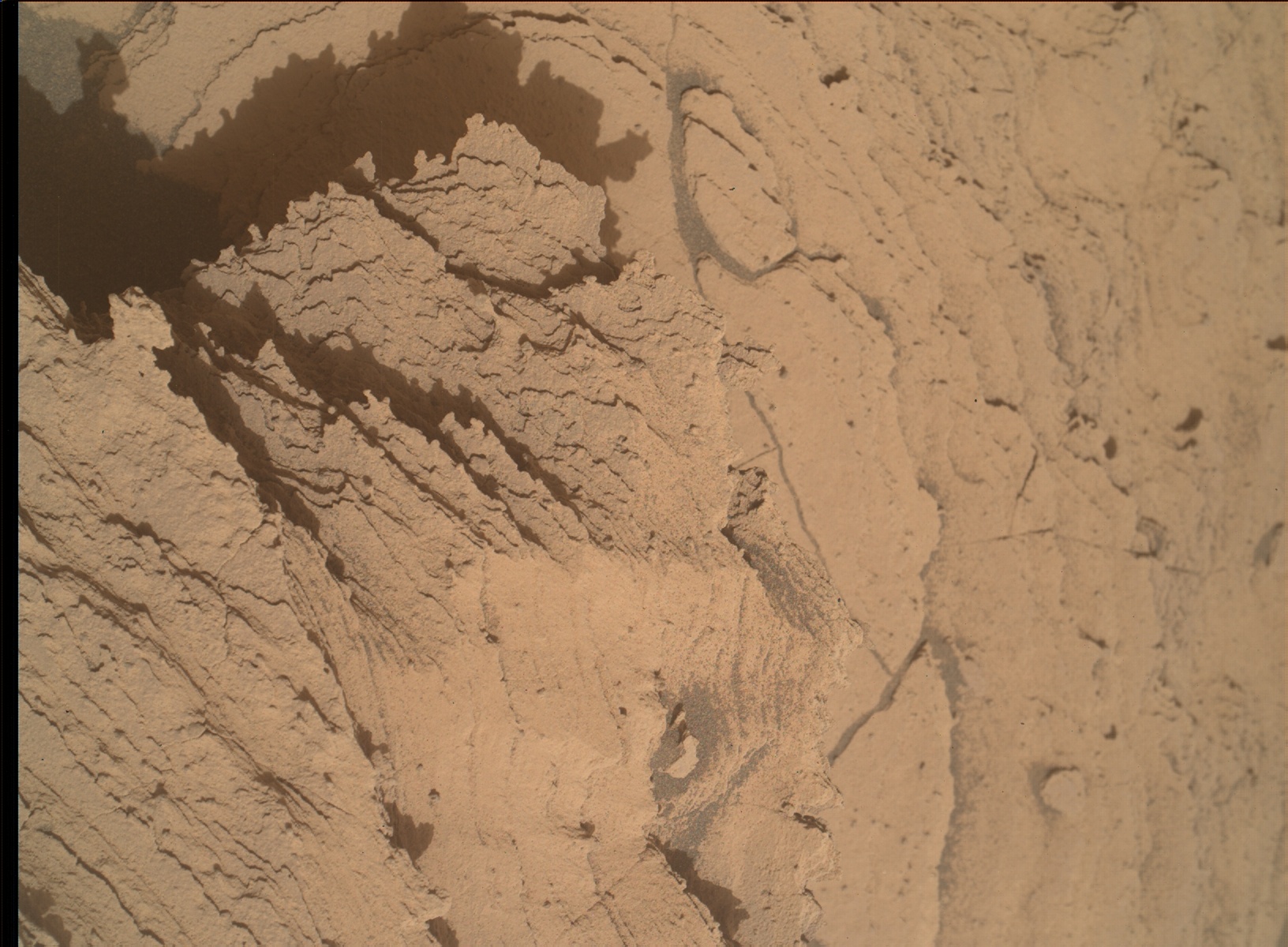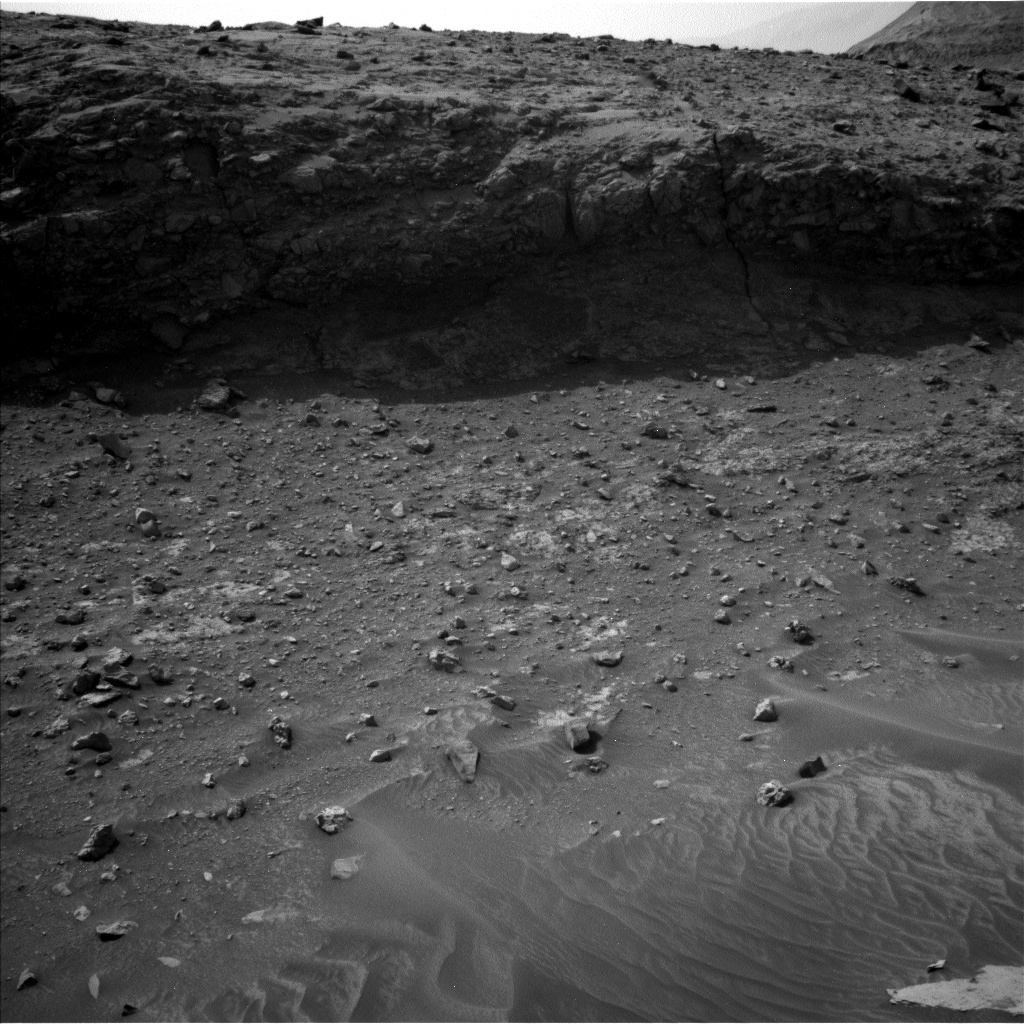2 min read

In our case, the Curiosity rover! The main focus of our 2-sol (sol - martian day) plan today is to bump (drive ~15 m) the rover into place for an attempt at drilling an interesting grey coloured patch of bedrock, identified from orbit within the Jura member of the Murray formation on the Vera Rubin Ridge, referred to as "Loch Eriboll." We want to figure out how these patches of bedrock differ from the surrounding tan coloured rocks, more typical of what we see from orbit.
We had the potential to do a "touch and go" in the plan, whereby we would unstow the arm and use the APXS and MAHLI instruments to examine the chemistry and texture of a target close-up, before driving away. However, the workspace consists of a lot of broken up, smaller pieces of rock and we already have a lot of compositional and textural information of similar rocks. The ability to use the arm is instead being utilized to acquire MAHLI close-up imaging of the REMS UV sensor. This is requested periodically to check for dust and the general health of the sensor.
We decided to concentrate our efforts on the bump and some remote science observations using instruments situated on the rover's mast. We selected 4 bedrock targets for investigation with ChemCam ("The Law," "Eathie," "The Minch" and "Windy Hills"), to monitor compositional variation, accompanied by Mastcam documentation of those targets. Mastcam mosaics are being acquired of the "Laithach" area where we observe a potential contact between the grey and tan rocks, and the "Loch Eriboll" area, which will include multiple filters to look at the spectral properties of the different rocks. We then bump to our potential drill location followed by imaging of the new workspace and a 20 minute DAN Active measurement.
Post-drive, there are two untargeted ChemCam AEGIS activities to look at bedrock composition, standard REMS and DAN passive, Navcam imaging to monitor the atmosphere/environment, CheMin vibe and dump sample (after X-ray diffraction on the previously drilled "Stoer" material), MARDI (used to document the ground immediately beneath the rover wheels) and SAM Electrical Baseline Test (to periodically monitor SAM's electrical functions).
A busy 2-sol plan to hopefully set us up to drill in the weekend plan!
Written by Lucy Thompson, Planetary Geologist at University of New Brunswick







